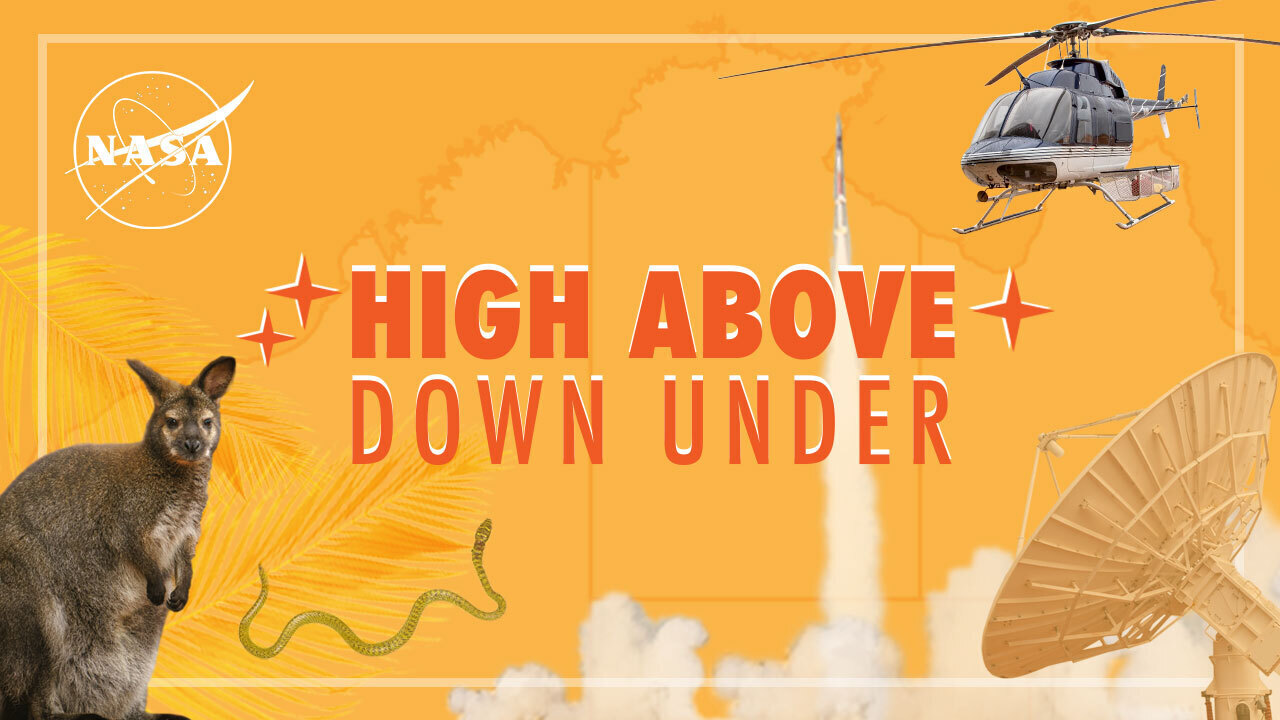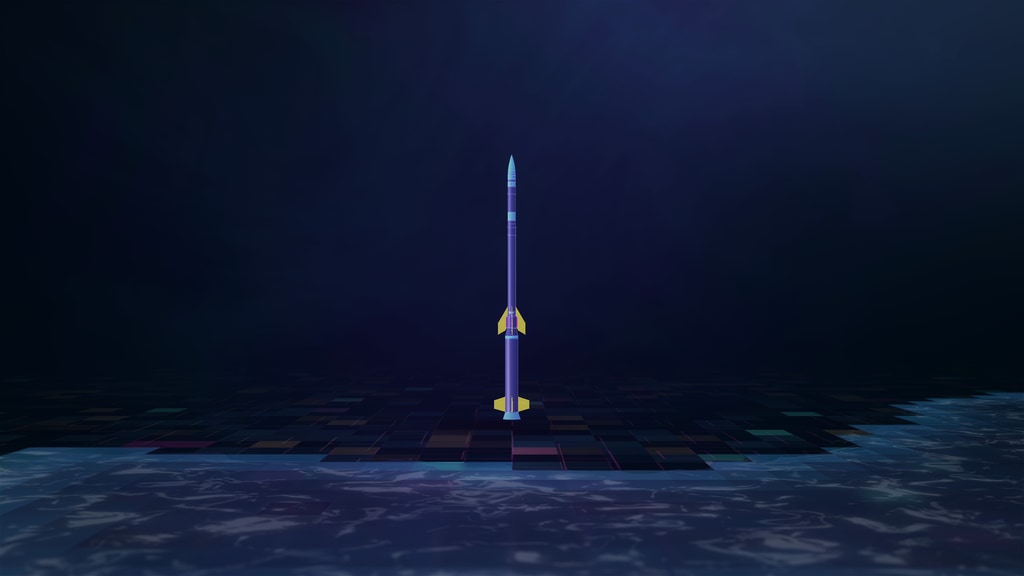Australia Sounding Rocket Campaign Press Kit
NASA will launch three suborbital sounding rockets in June and July 2022 from the Arnhem Space Center in Australia’s Northern Territory to conduct astrophysics studies that can only be done from the Southern Hemisphere. The three missions will focus on α Centauri A and B, two of the three-star α Centauri system that are the closest stars to our Sun, and X-rays emanating from the interstellar medium, clouds of gases and particles between stars.
The three sounding rocket night-time missions will be launched between June 26 and July 12 on two-stage Black Brant IX sounding rockets, from the Arnhem Space Center, which is owned and operated by Equatorial Launch Australia or ELA. The Arnhem Space Center is a commercial space launch facility, located on the Dhupuma Plateau near Nhulunbuy. The NASA missions will be the first launches from Arnhem.
Learn more: Australia Sounding Rocket Fact Sheet
Watch more:
Sounding Rockets: Cutting Edge Science, 15 Minutes at a Time
What Is a Sounding Rocket?
Riding Along with a NASA Sounding Rocket

The mission graphic for the NASA Sounding Rocket Program 2022 Australia Campaign depicts various components of the project. Around the outside of the graphic the major participants in the campaign are listed – the NASA’s Wallops Flight Facility, the University of Colorado, the University of Wisconsin and Equatorial Launch Australia. The center of the graphic denotes the science targets for the three missions – Alpha Centauri A and B and the X-ray background. The three missions will be conducted using two-stage Black Brant IX suborbital sounding rockets, also depicted in the graphic center. The location of the Arnhem Space Center and launch site is noted at the bottom center of the graphic.

A NASA Black Brant IX suborbital sounding rocket was successfully launched at 7:01 a.m. EDT (8:31 p.m. ACST) July 11, 2022, from the Arnhem Space Center (ASC) in the Northern Territory of Australia. The launch was for the Dual-channel Extreme Ultraviolet Continuum Experiment, or DEUCE, for the University of Colorado, Boulder. Preliminary analysis shows that good data was received by the science instrument during the flight.
The rocket carried the science instrument to an altitude of 162 miles (262 km) before descending by parachute and landing southwest of the launch site. Recovery operations of the science instrument and the rocket motors are in progress.
Credit: NASA Wallops/Brian Bonsteel

A NASA Black Brant IX suborbital sounding rocket was successfully launched at 7:01 a.m. EDT (8:31 p.m. ACST) July 11, 2022, from the Arnhem Space Center (ASC) in the Northern Territory of Australia. The launch was for the Dual-channel Extreme Ultraviolet Continuum Experiment, or DEUCE, for the University of Colorado, Boulder. Preliminary analysis shows that good data was received by the science instrument during the flight.
The rocket carried the science instrument to an altitude of 162 miles (262 km) before descending by parachute and landing southwest of the launch site. Recovery operations of the science instrument and the rocket motors are in progress.
Credit: NASA Wallops/Brian Bonsteel
A NASA Black Brant IX suborbital sounding rocket was successfully launched at 7:01 a.m. EDT (8:31 p.m. ACST) July 11, 2022, from the Arnhem Space Center (ASC) in the Northern Territory of Australia. The launch was for the Dual-channel Extreme Ultraviolet Continuum Experiment, or DEUCE, for the University of Colorado, Boulder. Preliminary analysis shows that good data was received by the science instrument during the flight.
The rocket carried the science instrument to an altitude of 162 miles (262 km) before descending by parachute and landing southwest of the launch site. Recovery operations of the science instrument and the rocket motors are in progress.
Credit: NASA Goddard/Mara Johnson-Groh

A NASA Black Brant IX suborbital sounding rocket launched from the Arnhem Space Center (ASC) in the Northern Territory of Australia at 10:29 a.m. EDT (11:59 ACST) on June 26, 2022. The rocket carried the X-ray Quantum Calorimeter, or XQC, experiment from the University of Wisconsin.
Photo credit: NASA Wallops/Brian Bonsteel
A NASA Black Brant IX suborbital sounding rocket launched from the Arnhem Space Center (ASC) in the Northern Territory of Australia at 10:29 a.m. EDT (11:59 ACST) on June 26, 2022. The rocket carried the X-ray Quantum Calorimeter, or XQC, experiment from the University of Wisconsin.
Video credit: NASA Goddard/Mara Johnson-Groh

A Black Brant IX sounding rocket launched from NASA's Wallops Flight Facility's July 2021 carrying the second Dynamo-2 experiment to study the electrical current in Earth’s ionosphere called the dynamo. Photo Credit: Allison Stancil

A Black Brant IX launched with the ASPIRE payload aboard on March 31, 2018. The payload contained a parachute that was tested and will be used in a future mission to Mars. Photo Credit: Chris Perry

NASA employees attend a pre-mission 'Welcome NASA' event at Parliament House, Darwin NT. Photo Credit: Brian Bonsteel
The Wallops Range telemetry teams work to setup tracking antennas and mobile vans in Australia ahead of the summer 2022 sounding rocket campaign.
The Wallops Range telemetry teams work to setup tracking antennas and mobile vans in Australia ahead of the summer 2022 sounding rocket campaign.
The Wallops Range telemetry teams work to setup tracking antennas and mobile vans in Australia ahead of the summer 2022 sounding rocket campaign.

NASA employees build a sounding rocket range in Nhulunbuy, NT with the additional efforts from local contractors. Photo Credit: Brian Bonsteel

NASA employees build a sounding rocket range in Nhulunbuy, NT with the additional efforts from local contractors. Photo Credit: Brian Bonsteel

NASA employees build a sounding rocket range in Nhulunbuy, NT with the additional efforts from local contractors. Photo Credit: Brian Bonsteel

NASA employees build a sounding rocket range in Nhulunbuy, NT with the additional efforts from local contractors. Photo Credit: Brian Bonsteel

NASA employees build a sounding rocket range in Nhulunbuy, NT with the additional efforts from local contractors. Photo Credit: Brian Bonsteel

NASA employees build a sounding rocket range in Nhulunbuy, NT with the additional efforts from local contractors. Photo Credit: Brian Bonsteel

NASA employees build a sounding rocket range in Nhulunbuy, NT with the additional efforts from local contractors. Photo Credit: Brian Bonsteel

NASA employees build a sounding rocket range in Nhulunbuy, NT with the additional efforts from local contractors. Photo Credit: Brian Bonsteel

NASA employees build a sounding rocket range in Nhulunbuy, NT with the additional efforts from local contractors. Photo Credit: Brian Bonsteel

Technicians work at Wallops on the X-ray Quantum Calorimeter Experiment, or XQC, payload before it ships to Australia. Photo Credit: Berit Bland

Technicians work at Wallops on the Dual-channel Extreme Ultraviolet Continuum Experiment, or DEUCE, payload before it ships to Australia. Photo Credit: Berit Bland

Technicians work at Wallops on the Dual-channel Extreme Ultraviolet Continuum Experiment, or DEUCE, payload before it ships to Australia. Photo Credit: Berit Bland

Technicians work at Wallops on the Suborbital Imaging Spectrograph for Transition region Irradiance from Nearby Exoplanet host stars, or SISTINE, payload before it ships to Australia. Photo Credit: Berit Bland
A Terrier-Improved Malemute sounding rocket launched August 17, 2016, carrying the RockSat-X educational payload. Video Credit: NASA’s Wallops Flight Facility
A Terrier-Improved Malemute sounding rocket launched August 17, 2016, carrying the RockSat-X educational payload. Video Credit: NASA’s Wallops Flight Facility
A Black Brant IX sounding rocket launched March 31, 2018, carrying the Advanced Supersonic Parachute Inflation Research Experiment (ASPIRE) mission testing a parachute for future missions to Mars. Video Credit: Chris Perry

The Alpha Centauri system in optical (main) and X-ray (inset) light.
Only the two largest stars, Alpha Cen A and B, are visible. These two
stars will be the targets of SISTINE and DEUCE. Image Credits: Zdenek
Bardon/NASA/CXC/Univ. of Colorado/T. Ayres et al.

This NASA/ESA Hubble Space Telescope image provides a stunning
view of the bright Alpha Centauri A (on the left) and Alpha Centauri B
(on the right), shining like huge cosmic headlamps in the dark. Because
these two stars are, together with their sibling Proxima Centauri, the
closest to Earth, they are among the best studied by astronomers.
And they are also among the prime targets in the hunt for habitable
exoplanets. Image credit: ESA/NASA

Visibility Map for the Black Brant IX sounding rockets.

Aerial view of Arnhem Space Center. Credit: Equatorial Launch Australia

Wind tower assembly for monitoring winds near the launch pad. Credit: NASA Wallops/Brian Bonsteel
Credits
Please give credit for this item to:
NASA's Goddard Space Flight Center
-
Producers
- Keith Koehler (NASA/WFF)
- Joy Ng (KBR Wyle Services, LLC)
- Miles S. Hatfield (Telophase)
- Jamie Adkins (NASA/WFF)
-
Writer
- Mara Johnson-Groh (Wyle Information Systems)
-
Photographers
- Chris Perry (KBR Wyle Services, LLC)
- Brian Bonsteel (KBR Wyle Services, LLC)
- Allison Stancil (KBR Wyle Services, LLC)
- Berit Bland (Berit Bland Company)
Release date
This page was originally published on Tuesday, June 7, 2022.
This page was last updated on Wednesday, May 3, 2023 at 11:44 AM EDT.

